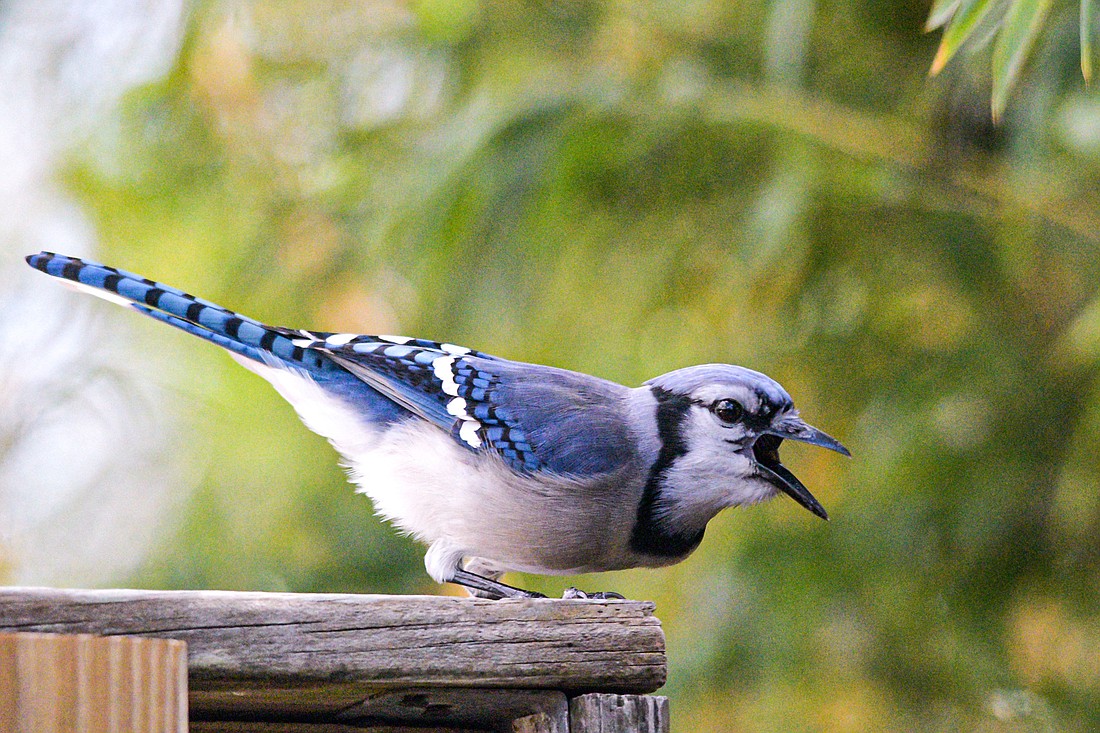- May 7, 2025
-
-
Loading

Loading

Colorful, familiar and loud, blue jays are year-round residents in Florida. With their large blue crest on top of their heads, and striking white, blue and black barred wings, jays are easy to identify by sight and also by sound. These loquacious songbirds communicate with other jays often, both vocally and with “body language,” using their crest.
Blue jays are members of the highly intelligent Corvidae family (which also includes magpies and crows), and are known for their extensive repertoire of raptor imitations. They will regularly mimic ospreys, red-shouldered hawks, American kestrels, and even bald eagles.
But why do blue jays imitate birds of prey? It has been suggested it's to warn other birds a predator is nearby, or perhaps to trick other birds, with the goal of scaring them away for food. However, jays will also imitate songbirds, mechanical noises, human speech, and meowing cats. It is therefore possible that jays simply enjoy adding as many sounds as possible into their own vocabulary. Simply because they can.
Jays cache (hide) food such as acorns in tree cavities or bury them in the ground, for later retrieval. By gathering food in an expanding pouch in their throat, as well as using their mouth and bill, they can transport up to 5 acorns at a time. Jays are therefore vital seed dispersers for oaks and other nut-bearing trees, with food they fail to retrieve (as they have many caches, and hide seeds singularly) potentially sprouting into plants or trees. Indeed, it is suggested that the rapid spread of oak trees in North America after the last Ice Age was thanks to the caching behavior of blue jays.
Save our Seabirds is a non-profit organization whose mission is to rescue and rehabilitate sick and injured birds, releasing as many as they can, while educating our community about avoiding injuries and preserving habitats.